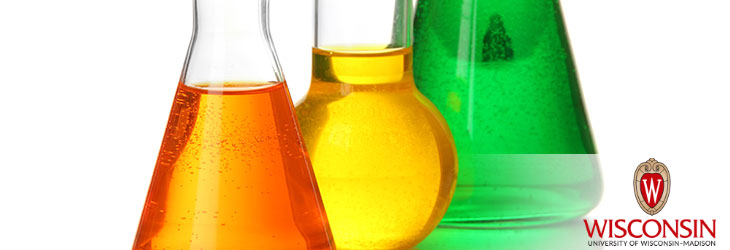Materials & Chemicals

Friction-Stir Welding of Dissimilar Metals with High Weld Strength
WARF: P09344US01
Inventors: Sindo Kou, Vahid Firouzdor
The Wisconsin Alumni Research Foundation (WARF) is seeking commercial partners interested in developing a friction-stir welding method to join dissimilar metals with high weld strength.
Overview
Recent surveys have identified welding of dissimilar metals as a top priority in materials joining technology. Friction-stir welding currently is the best potential process for welding dissimilar metals. Friction-stir welding is a solid-state welding process in which a rotating, cylindrical tool generates frictional heat to weld metals while maintaining original metal characteristics as much as possible. Friction-stir welding uses less energy than traditional welding processes and does not require air or water supplies.
Butt welding and lap welding are the types of welds used in friction-stir welding. Butt welding, where metal edges meet along the sides, yields a strong weld but requires strict tolerances and process control. Lap welding, where the metals overlap, is preferred in production due to lower tolerances needed for joining. However, using this type of weld with dissimilar metals can result in brittle intermetallic compounds, which degrade weld strength. A process to join dissimilar metals with friction-stir welding while retaining both weld strength and key manufacturing characteristics is needed.
Butt welding and lap welding are the types of welds used in friction-stir welding. Butt welding, where metal edges meet along the sides, yields a strong weld but requires strict tolerances and process control. Lap welding, where the metals overlap, is preferred in production due to lower tolerances needed for joining. However, using this type of weld with dissimilar metals can result in brittle intermetallic compounds, which degrade weld strength. A process to join dissimilar metals with friction-stir welding while retaining both weld strength and key manufacturing characteristics is needed.
The Invention
UW-Madison researchers have developed a method to join dissimilar metals using friction-stir welding through a process that combines the strength of butt welding and the manufacturing characteristics of lap welding. One application of the method is a modification to conventional lap welding in which a small extra piece of metal is added such that three, instead of two, metal pieces are welded together. A second application is to use friction-stir spot welding to join dissimilar metals by welding a piece of metal such as aluminum with predrilled holes onto a second metal piece such as magnesium. A disc of the second metal (i.e. magnesium) is added into each predrilled hole, increasing the weld strength when the first piece of metal is friction-stir spot welded to the second piece. Both applications of friction-stir welding to join dissimilar metals improve weld strength and manufacturing characteristics over traditional friction-stir welding methods.
Applications
- Joining of dissimilar metals using friction-stir welding processes
- Welding in automotive, shipbuilding, locomotive and aircraft industries
Key Benefits
- Combines benefits of lap welds and butt welds in a friction-stir welding technique that provides better strength and manufacturing characteristics than traditional methods
- Avoids brittle intermetallic compounds at weld site
Additional Information
For More Information About the Inventors
Related Technologies
Related Intellectual Property
Tech Fields
For current licensing status, please contact Michael Carey at [javascript protected email address] or 608-960-9867